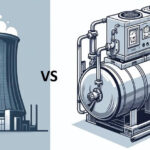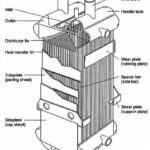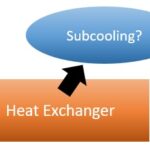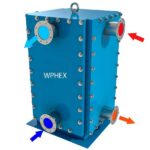How to use shell and tube heat exchanger software effectively? This short article aims to give some recommendations and guidelines on how to effectively use shell and tube heat exchanger software (S&THex) effectively to design a heat exchanger, the article may also answer questions such as how do I know I have designed my heat exchanger correctly? Is there a way to benchmark my results?
The article will not discuss or attempt to design a heat exchanger but instead will try to answer these questions and hopefully clarify this issue for you.
Designing heat exchangers requires a lot of effort and calculations which can be lengthy to perform and often need the use of heat exchangers software solutions to save time . You would normally start by having some little process information and process conditions and an idea of what you want to accomplish by the design and how to reach an optimum design to fulfil process objectives.
Process Data Requirements
A good understanding of the underlying principles of shell and tube heat exchanger design is needed to use this software effectively and produce sensible results. Before attempting to use the software it’s important to obtain the required process data,
a. flow rates of both streams.
b. inlet and outlet temperatures of both streams.
c. Allowable pressure of both streams
Generally, for liquids, a value of 49–69 kPa (7 – 10 psi) is permitted per shell. A higher pressure drop is usually assumed for viscous liquids in the tube side. For gases, the allowed value is generally 4.9 – 20 kPa (0.7 – 2.85 psi), 10 kPa is normally assumed.
d. fouling resistance for both streams. This can be obtained from literature sources, TEMA publishes an extensive list and it’s work looking at it. The software also contains a good list.
e. Physical properties of both streams. These include viscosity, thermal conductivity, density, viscosity and specific heat, at average inlet and outlet temperatures. The software has a separate physical properties package that will allow you to obtain this information. Alternative sources are available in literature.
f. Materials of construction
g. Tube sizes, orientation and shell size – such information can be obtained from tube counts.
Floating head heat exchangers are often limited to a shell internal diameter of 1.4 – 1.5 m and a tube length of 6 m or 9 m, whereas fixed tubesheet heat exchangers can have shells as large as 3 m and tubes lengths up to 12 m or more
How do I design it?
The answer is very much dependant on your process specification, heat exchanger calculations are generally trial and error, the best way to know if your design is good is to compare your results to a functional heat exchanger, however not all the times we have this presented so the approach can vary,
Here is what I would personally do to make sure I am getting an acceptable results,
Input side
a. Make sure I have a correct assumed overall heat transfer coefficient, these values are listed in references they are obtained based of other exchangers operating in industry.
b. Check what is my acceptable process limitations, i.e. pressure drops, tube side and shell side velocities, higher velocities can lead to erosion issues, having said that, very low velocities can also lead to fouling “depending on your liquids”
c. Use correct correlations for tube side and shell side heat transfer coefficients, there are few already in the software
Output side
d. After you complete the calculations, check your final design overall heat transfer coefficient. Compare the value with your assumed value, an acceptable result would be within 30%
0 < (Uo,cal – Uo, ass)/Uo, ass) < 30%
where;
Uo,cal is the calculated overall heat transfer coefficient (the design value – taking into account any fouling coefficients)
Uo, ass is the assumed overall heat transfer coefficient value (this is the value we assume in the beginning of the calculations)
e. Check your velocities, see the recommended shell and tube side velocities article – basically lower velocities can cause fouling issues and much higher can cause erosion issues. If there is silt or similar material present, it’s recommended to keep the velocity high to prevent settling.
f. Check your pressure drops, high pressure drops may require extra process options hence more cost.
g. Check your head duty and area – you don’t want to oversize or undersize the exchanger.
h. If all is well, then accept the design and proceed to optimisation – in optimisation, you are mainly trying to make the best out of your results.
Links
Shell & Tube heat exchanger design and rating software
Shell & Tube condenser design software











